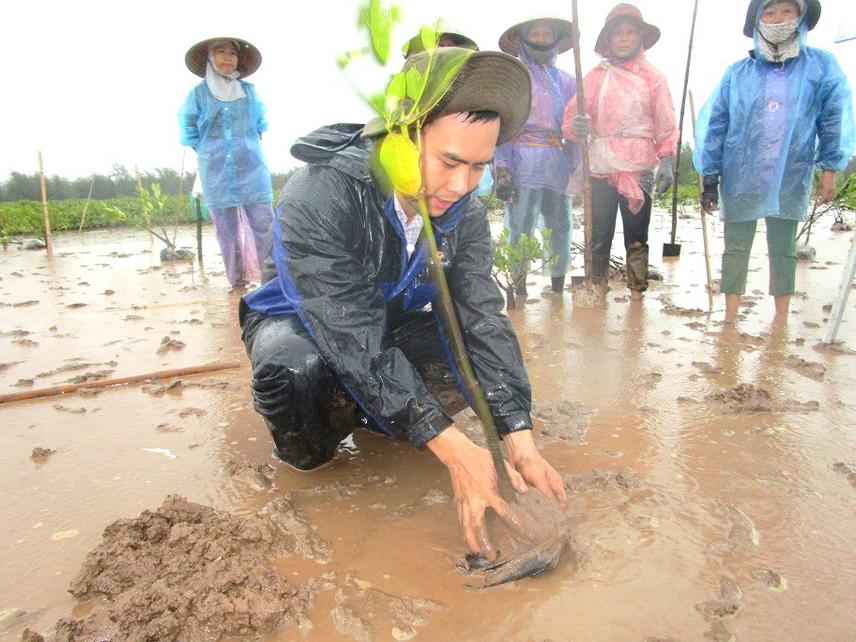Tran Van Sang
We will study the status of mangrove degradation in Xuan Thuy National Park then propose restoration plan to improve mangroves planting, recovery to project vulnerable coastal area, prawning ground for fishery and feeding ground for migratory birds in Xuan Thuy National Park. The works includes providing capacity training and technical support for the Park’s staff and community member in protecting and sustainable mangroves forest management.

Project member guided mangrove planting techniques for the community
Xuan Thuy National Park (Nam Dinh province) is the first Ramsar site in Southeast Asia. The park is also recognized as one of the 9 Biosphere Reserve in Vietnam by UNESCO’s MAB. The recognition confirm the biodiversity richness and the globally important of the park and its mangrove forest.
Mangrove forest in Xuan Thuy National park play the role providing sprawning ground for aquatics species but they are also important site migratory birds including critically endangered species such as black-faced spoolbill (Platalea minor) and spood-billed sandpiper (Calidris pygmaea). The mangrove is also vital for protecting the sea dyke system that protect the highly productive red-river delta and highlight populated rural area of Nam Dinh and Thai Binh Provinces. With the mangroves forest, it help to limit the effects of floods and storms and high tides; reducing waves, limit erosion and protection of sea dykes; in addition, the forest is contributing in securing livelihoods for thousands of people who live in the buffer zone of the park. However, the rapid extension of aquatic species farming, and agriculture extension have reduce much of the mangroves and create serious threat to the forest by cutting, thinning that made significant change the ecological condition of the forest as well and the whole ecosystem of the area then reduce the ecosystem services that the forest is providing for the area and the human well-being.
Our project therefore focus on studying the current status of this important mangrove forest include threats, development issue, management gaps then propose strategy to protect, manage and restoration of the mangrove to ensure and maintain its ecosystem services and biodiversity function in supporting the survival of critically endangered migratory species.